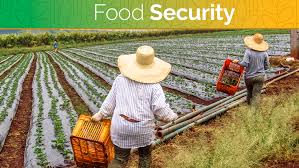Stories by John Oba
Abuja
The Food and Agricultural Organisation (FAO) new edition of the Crop Prospects and Food Situation report released last week has further collaborated the famine alarmed raised by President Muhammadu Buhari’s Senior Special Assistant on Media and Publicity, Malam Garba Shehu as it revealed that over 8 million Nigerians are food insured in 2016, as a result of civil conflict and weather-related shocks have severely stressed food security.
It could be recalled that Shehu, had in a radio interview in Kano, warned that given the rate at which Nigeria’s cereals and grains were being massively exported across its northern boarders, there was a real danger of famine if government failed to intervene.
The FAO report further projected that this could increase to 11 million by August 2017, saying the ongoing conflict in northern states curtailed plantings, while the sharp depreciation of the Naira currency has raised domestic food prices and affected regional trade as more Nigerian cereals are exported while fewer livestock are imported.
It states that droughts and weather effects linked to El Niño triggered significant crop shortfalls in 2016 in several countries.
It also revealed that Africa’s aggregate cereal production declined in 2016 despite some sub-regional gains, notably in West Africa and the Sahel region, which is on track for a record cereal production. Maize output in Southern Africa decreased sharply, severely stressing food security conditions.
The report includes Nigeria as part of 39 countries that are in need of external food assistance.
It revealed that while the outlook for global cereal supplies is improving due to generally favourable growing conditions for crops, the legacy of recent droughts persists, as do the negative effects of a spate of conflicts.
Agricultural forecasts suggest robust grain harvests are on the horizon, but hunger will likely intensify in some regions during the lean seasons before the new crops have matured.
“In Southern Africa, where El Niño effects sharply curtailed food production in 2016, the number of people requiring outside assistance from January through March 2017 is expected to significantly increase compared to the same period a year ago. Child stunting rates are significantly high” in the most troubled areas, notably Madagascar, Malawi and Mozambique,” the report notes.
To facilitate humanitarian response planning, the report identifies the primary causes of local food crises. These range from exceptional shortfall in food production and widespread lack of access – due to low incomes, high prices or disrupted distribution networks, to the impact of conflicts on local food security conditions.
Civil conflicts and their consequences, including refugee movements that are burdening host countries such as Cameroon and Chad, are cited in 21 of the 39 countries. Widespread conflict can lead to the loss and depletion of households’ productive assets, as in Central African Republic, and to security concerns that hinder farming activities, as in South Sudan.
“In parts of South Sudan, improved harvests are likely to have only a short-lived effect as ongoing conflict has reduced the ability to engage in agriculture, posing extra risks for the most vulnerable communities.”



